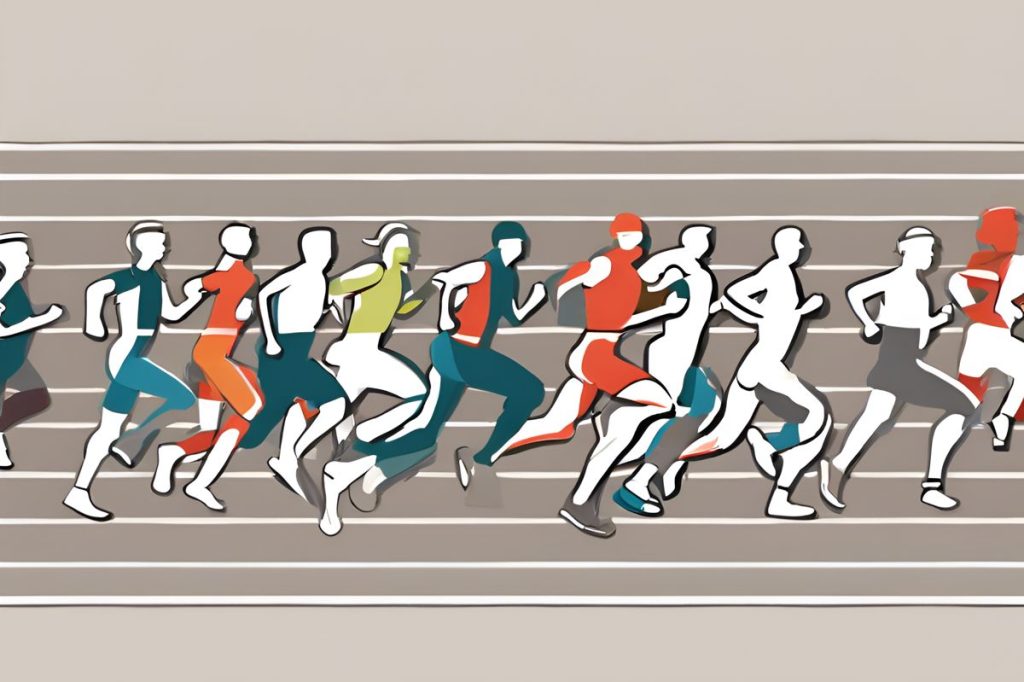Over 17,000 runners from 75 countries participated in the Limassol Opap marathon, showcasing global unity and sports tourism. The event included various races like a full marathon, half marathon, 10km, and 5km events, bringing together people from different cultures and backgrounds in a celebration of athleticism and camaraderie.
How many countries participated in the Limassol marathon?
Over 17,000 runners from 75 countries participated in the Limassol Opap marathon, including a series of races such as a full marathon, half marathon, 10km, and 5km events, showcasing global unity and sports tourism.
A Global Gathering
Over 17,000 people from 75 countries converged to participate in a series of events at the Limassol Opap marathon over the weekend. This international tapestry of participants highlights how events of this magnitude can transcend borders, bringing together people from different cultures and backgrounds with a shared passion for running. The event wrapped up on Sunday afternoon, with participants crossing the finish line to the cheers of the crowd, solidifying a weekend of physical achievement and camaraderie.
Deputy Minister of Tourism, Costas Koumis, emphasized the significance of the marathon and similar events, mentioning, “For us it is an extremely important event.” He expressed his satisfaction at watching such events expand each year, acknowledging the positive impact they have on the country’s global presence. The success of the marathon is a testament to the growing interest in sports tourism, with these events attracting visitors who not only compete but also take the time to explore the host country.
Athletic Endeavors
Sunday was a beehive of activity with four major races taking place: the full 42km marathon, the Muskita 21km half marathon, the Petrolina Energy Race 10km, and the RemAthlon Individual Race 5km. Among the more than 17,000 runners who participated over the weekend, 3,000 were international visitors—a figure that has impressively doubled since the previous year. These numbers represent a burgeoning athletic event that has become a staple in the sporting calendar.
The winners of the races were a diverse group, reflecting the international nature of the event. Israel’s Yossi Gross took the title in the men’s marathon with a time of 02:46:04, leading a competitive field that included his fellow countryman Yossi Geta and Cypriot Nicholas Georgiou. In the women’s marathon, it was Sophie Roussard from France who finished first with a time of 03:29:50, followed closely by Ioanna Tsokkou of Cyprus and Poland’s Karolina Borowski.
Cultural Impact and Community Engagement
The Limassol marathon is more than a sporting event; it’s a cultural phenomenon that brings economic benefits and community engagement to the region. Such events spark a surge of activity in local businesses, from hotels and restaurants to retailers and transportation services. They also provide a platform for charitable causes, health awareness campaigns, and foster a spirit of volunteerism within the community.
The inclusion of educational and fun activities, like the printmaking workshop hosted in conjunction with the marathon, adds another layer of community involvement. These events offer a chance for residents and visitors alike to engage with local culture and the arts, blending athleticism with cultural enrichment.
A Focus on Health and Wellness
Finally, the Limassol marathon emphasizes the importance of health and wellness. With races accommodating all levels of fitness, from professional athletes to casual runners and families, the event promotes an active lifestyle. It serves as an inspiration for attendees to prioritize their health and potentially ignites a passion for running.
The preparation for such a marathon often involves months of training, disciplined diet, and mental conditioning. This dedication to personal health and endurance not only benefits the individuals but also sends a ripple effect throughout the community, encouraging others to take steps towards a healthier lifestyle.
It’s clear that the Limassol marathon has cemented its place as a cornerstone event, not only for its athletic prestige but also for its role in uniting people from across the globe, boosting tourism, and fostering a sense of global community centered around the shared values of health, perseverance, and cultural exchange.
How many countries participated in the Limassol marathon?
Over 17,000 runners from 75 countries participated in the Limassol Opap marathon, including a series of races such as a full marathon, half marathon, 10km, and 5km events, showcasing global unity and sports tourism.
What events were included in the Limassol Opap marathon?
The Limassol marathon featured a full marathon, half marathon, 10km, and 5km events, attracting over 17,000 participants from 75 countries. The diverse range of races catered to runners of all levels and highlighted global sports tourism.
How did the winners reflect the international nature of the Limassol marathon?
The winners of the Limassol marathon, including Yossi Gross from Israel and Sophie Roussard from France, exemplified the international spirit of the event. The competition featured athletes from various countries, showcasing the diversity and talent present at the marathon.
What impact does the Limassol marathon have on the community and culture?
The Limassol marathon goes beyond being a sporting event by contributing to the local economy, promoting community engagement, and raising awareness for health initiatives. The event fosters cultural exchange, supports local businesses, and inspires individuals to prioritize health and wellness through active participation.

